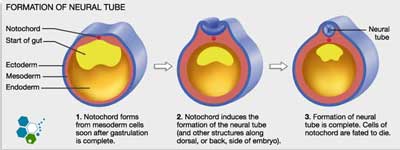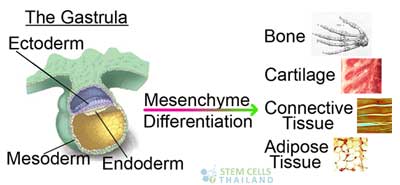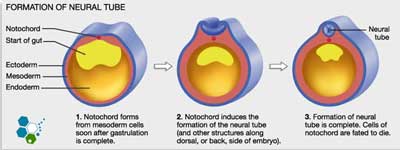An Ectoderm is a body of cells forming the outermost layer of major organ systems in the body, such as the skin, neural cells and nervous system, and the sensory organs. This layer is formed by the blastocyst’s inner cell mass.[1]

The cells of various germ layers can differentiate themselves [2] through lab culturing to try to regenerate and repair diseased organs and dysfunctioning systems in the body through a process known as organogenesis.
The ectoderm layer can also give rise to a person’s:
- peripheral nervous system
- central nervous system and spinal cord
- Tooth enamel
- sensory epithelium of your eyes,nose or ear
- Your hair and nails
- Mammary and pituitary glands

During embryonic development, the embryo undergoes gastrulation, forming three primary germ layers: ectoderm, mesoderm, and endoderm. These germ layers give rise to various tissues and organs in the developing organism.
Ectoderm Derivatives:
The ectoderm is the outermost germ layer. It differentiates to form a wide variety of tissues and structures, including:
- Epidermis: The outer layer of the skin, including hair and nails.
- Nervous System:
- Central nervous system (CNS): This includes the brain and spinal cord.
- Peripheral nervous system: This includes the nerves outside the central nervous system.
- Sense Organs:
- Eye: Specifically, the lens and cornea.
- Ear: Specifically, the inner ear structures involved in hearing and balance.
- Nose: Olfactory epithelium responsible for the sense of smell.
- Mouth and Anus: The epithelium of the mouth and the distal part of the anus.
- Pituitary Gland and Pineal Gland: Glands that play crucial roles in endocrine regulation.
- Tooth Enamel: The hard, outermost layer of teeth.
- Mammary Glands, Sweat Glands, and Sebaceous Glands: Glands associated with the skin.
Endoderm:
The endoderm is the innermost germ layer and differentiates to form the lining of many internal structures, as well as certain glands:
- Gastrointestinal Tract: The lining of most of the digestive tract, from the esophagus to the rectum.
- Respiratory System: This includes the trachea lining, bronchi, and lungs.
- Liver: A significant organ involved in detoxification, protein synthesis, and the production of biochemicals necessary for digestion.
- Pancreas: An organ with both endocrine functions (like insulin production) and exocrine functions (like producing digestive enzymes).
- Thyroid and Parathyroid Glands: Glands that regulate metabolism, calcium, and phosphorus balance.
- Urinary Bladder and Urethra: Structures involved in storing and expulsing urine.
- Tympanic Cavity and Auditory Tube: Parts of the ear associated with hearing.
- Tonsils: Lymphoid tissues located in the pharynx.
- Thymus: A lymphoid organ where T cells mature.
Understanding the derivatives of the germ layers is fundamental in developmental biology. It helps scientists and medical professionals predict and understand congenital anomalies and the embryonic origin of various tissues and organs.
Published Clinical Citations
[1] ^ Pieper, Mareike, Katja Ahrens, Elke Rink, Annette Peter, and Gerhard Schlosser. 2012. Differential distribution of competence for panplacodal and neural crest induction to non-neural and neural ectoderm. Development (Cambridge, England), no. 6 (February 8). doi:10.1242/dev.074468. https://www.ncbi.nlm.nih.gov/pubmed/22318231
[2] ^ Yardley, Nathan, and Martín I García-Castro. 2012. FGF signaling transforms non-neural ectoderm into neural crest. Developmental biology, no. 2 (September 19). doi:10.1016/j.ydbio.2012.09.006. https://www.ncbi.nlm.nih.gov/pubmed/23000357

